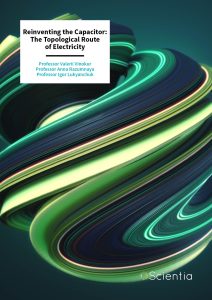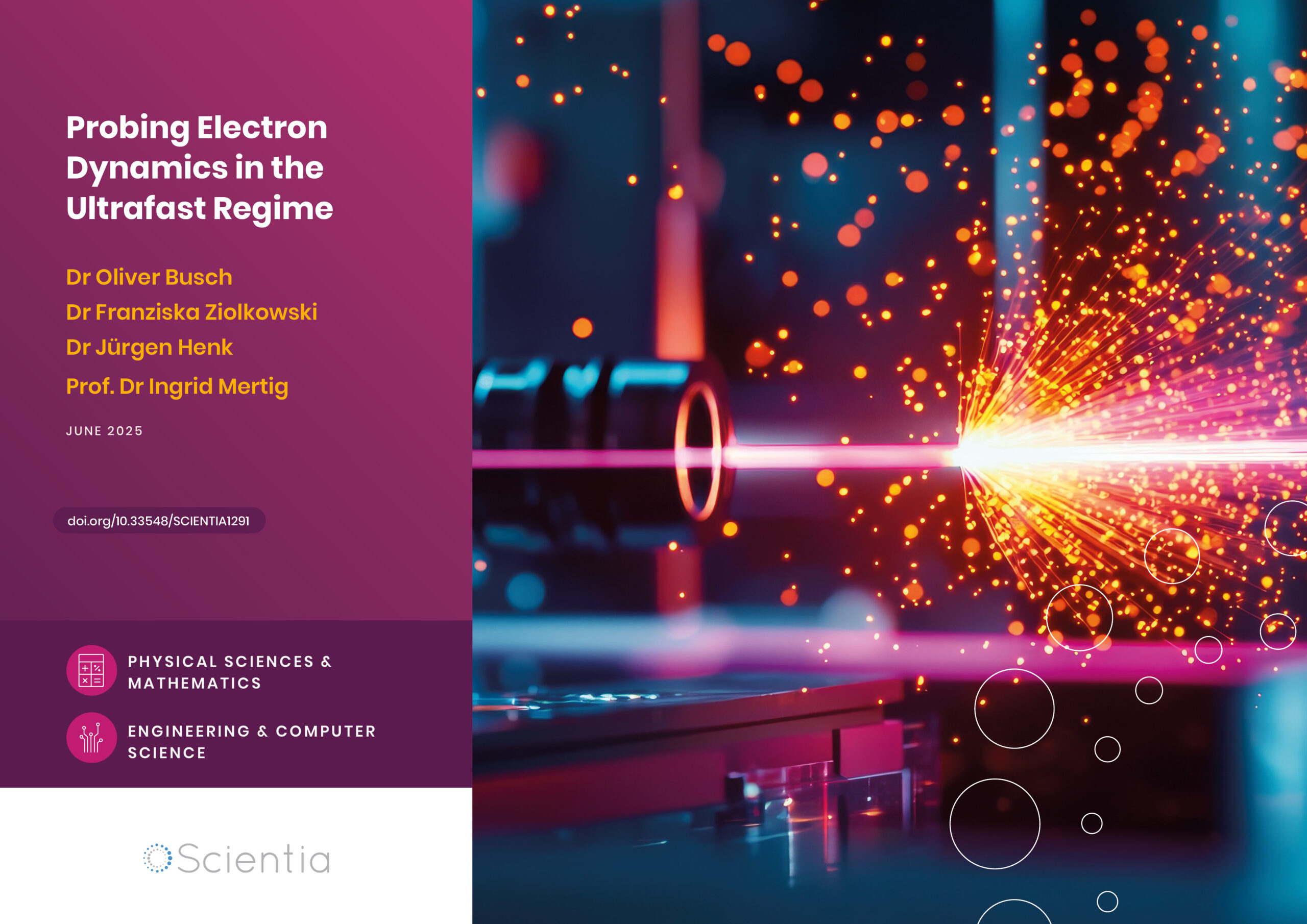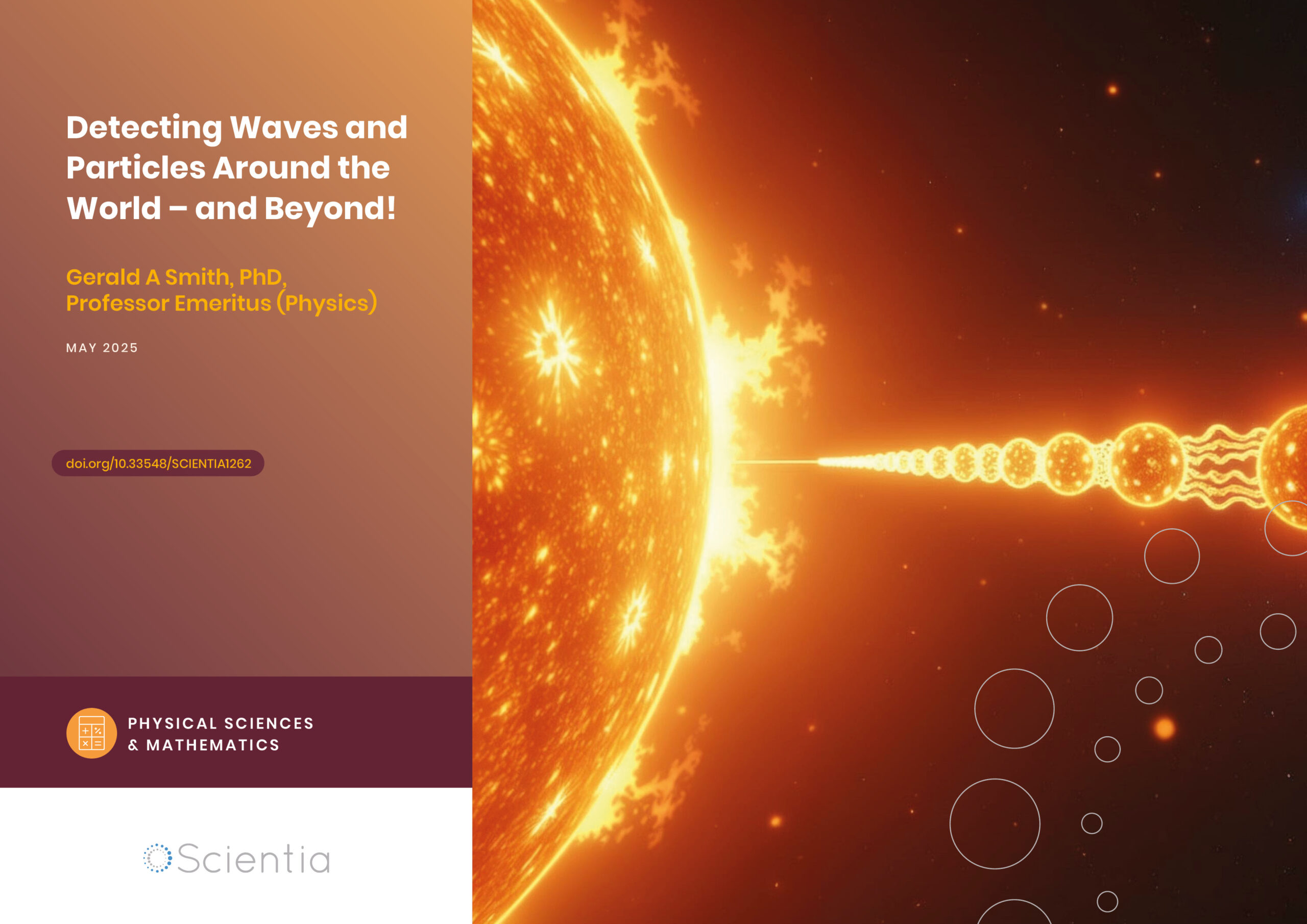Professor Valerii Vinokur | Professor Anna Razumnaya | Professor Igor Lukyanchuk – Reinventing the Capacitor: The Topological Route of Electricity
Modern microelectronics is currently facing a profound challenge. The demand for even smaller and more closely packed electronics has hit a stumbling block: the power emitted in these devices releases more heat than can be efficiently removed. Now, Professors Valerii Vinokur, Anna Razumnaya, and Igor Lukyanchuk propose a solution based on the seemingly counterintuitive phenomenon of ‘negative capacitance’. The effect is surprisingly linked to an intriguing topological structure, which is found time and again across a broad range of scientific fields.
Electrostatic Forces
The effects of electrostatics have fascinated humankind for thousands of years. The ancient Greeks were particularly interested in the behaviour of yellow, fossilised tree resin which we call amber – but was known to them as elektron. ‘These ancient observers noticed that after having been rubbed with a woollen flap, amber attracts lightweight items such as pieces of straw, fluff, or dried leaves,’ describes Professor Valerii Vinokur, the US Chief Technology Officer of Terra Quantum AG.
This effect occurs because electrons are transferred over from the object rubbing the amber – creating a build-up of excess negative charge, which induces an electric field in turn. As it interacts with the surrounding environment, the field causes molecules with previously random orientations to shift positions, so that the positive and negative charges they carry will slightly separate along the field lines. This generates distinct ‘poles’ of positive and negative charge, in an effect called ‘polarisation’.
When polarised objects are sufficiently small, the attractive electrostatic forces generated by polarisation are strong enough to counteract their weight, allowing them to stick to the amber’s surface. After a while, however, the amber’s negative charge will be gradually lost to the surrounding environment. This causes polarised molecules to regain their random orientations, and the electrostatic force gradually diminishes.
Perhaps owing to its weak and temporary nature, the effects of electric polarisation remained little more than an interesting curiosity for thousands of years after its initial discovery. But over the past few centuries, it has come to completely transform many aspects of our everyday lives.
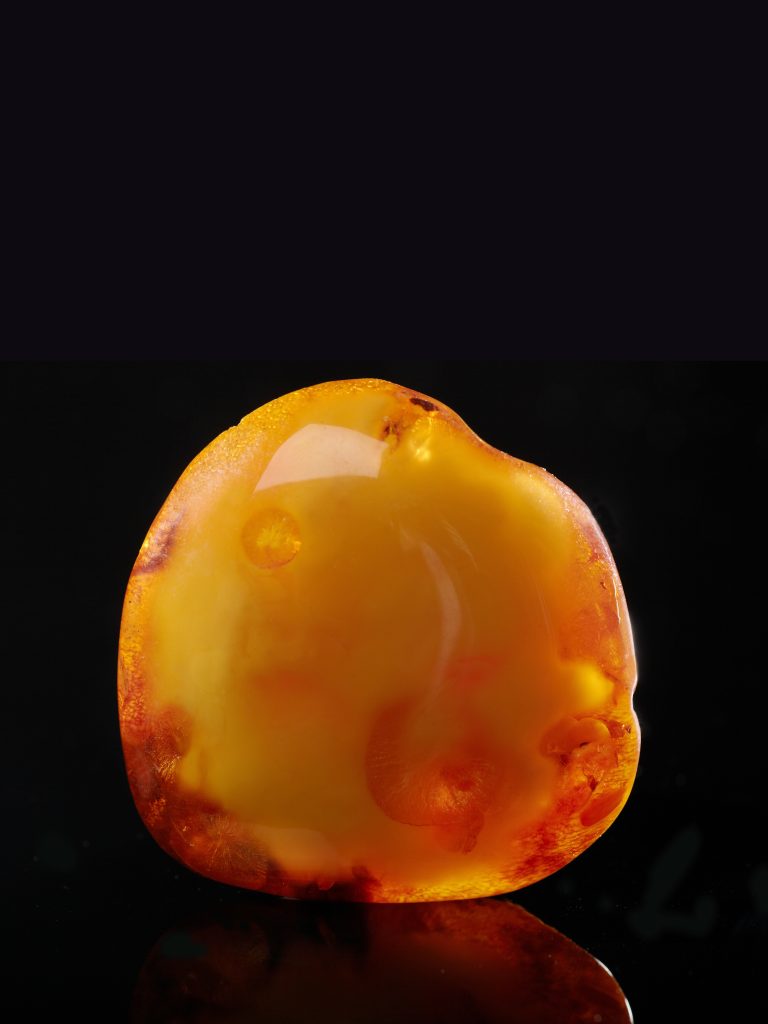
Harnessing Electrical Charges
In 1745, Dutch scientist Pieter van Musschenbroek created a device that harnessed the same electrostatic effects seen in amber – but that allowed build-ups of excess charges to stay around for far longer. ‘The device was a glass jar with conducting tin foil coating the inner and outer glass surfaces,’ illustrates Professor Anna Razumnaya at the Southern Federal University of Russia. ‘A metal rod protruding across the insulating cork at the neck of the jar was connected to the inner foil.’
When an electrostatic field was applied to the metal rod, it caused either positive or negative charges to build up in the inner foil. Meanwhile, the outer foil was connected to the ground, and was sufficiently close to the inner foil to feel its electrostatic effects. This meant that if the inner foil was positively-charged, it would draw in electrons from the ground to counteract it; while in the opposite case, the electrons it carried would escape into the ground.
After charging, the inner and outer foils carried equal and opposite charges, which could be stored for extensive periods. This meant that if the two foils were then connected by a conducting wire, electrons would pass along it to neutralise the differing charges of the foils, generating an electrical current in turn. The device was named a ‘Leyden jar’, after the city where van Musschenbroek carried out his research.
The Leyden jar saw numerous improvements to its design over the coming decades – with more powerful iterations such as flat glass plates, alternating with foil conductors, remaining in widespread use until around 1900. Yet by then, the invention of technologies such as radio communications called for a more reliable alternative – inspiring the basis of virtually all electrical devices we use today.
Capacitors in Modern Electronics
The Leyden jar was perhaps the earliest example of a modern device named a ‘capacitor’. A wide array of different capacitor designs exists today, which vary depending on their intended purpose, but their basic design always consists of two or more thin metal plates, separated by a tiny gap. This space is filled with an insulating material such as glass, plastic, or ceramic. When the plates are charged, the electric field between them causes this material to become polarised, allowing the plates to retain their charge for longer.
‘Nowadays, capacitors are widely used as parts of the electric circuits and can be found in almost all electrical devices,’ explains Professor Igor Lukyanchuk at the University of Picardie Jules Verne in France. ‘A capacitor is an essential part of an omnipresent device named a field-effect transistor, which we find in any electronic setup ranging from the electric hand watches to supercomputers.’ Field effect transistors rule and control the flow of electrical currents in electric circuits by the application of voltage to the constituting capacitor.
So far, improvements to capacitor technologies have allowed field-effect transistors to become smaller and smaller, allowing more and more of them to fit onto a single microchip. This has enabled us to produce ever more complex controllable circuits, which have steadily improved the efficiency of the electrical devices we depend on. Yet in recent years, a fundamental physical limitation has meant that this progress has begun to stall.

Reaching a Power Limit
The problem is that during their operation, field-effect transistors each generate some amount of heat. While the effect is minuscule for a single field-effect transistor, it becomes far more significant when numerous devices are clustered onto a single microchip. To maintain the performance of the devices in question they must be cooled down, thereby requiring efficient heat evacuation.
As the number of field-effect transistors increases, these power requirements can only ramp up. This means that if the devices become any smaller and more closely packed together, any subsequent boost in their efficiency would be negated by the inefficiency of the heat removal required to prevent them from ‘boiling up’. ‘At present, traditional field-effect transistor circuits are at their limit in terms of their efficiency and power losses,’ Dr Vinokur describes. ‘Neither can the number of them that can fit on a microchip be raised, nor can their size be further scaled down.’
If this limitation is hit, it would pose serious questions as to whether the speed of technological advancement can keep pace with the rapidly growing demands of the modern world. To overcome this pressing issue, Professors Vinokur, Razumnaya and Lukyanchuk propose an ingenious construction of a capacitor that lies in the phenomenon that physicists have known about for over a century.
Emerging Knowledge of Ferroelectricity
In the 1920s, researchers discovered a new class of materials called ferroelectrics, which appeared to remain electrically polarised, even outside the influence of an external electric field. The properties of ferroelectric materials arise due to ‘dipoles’ of positive and negative charge. We encountered these dipoles previously in the electrostatic forces produced by amber – though in this case, they arise in a solid material’s atomic lattice. ‘Their static electricity appears as a result of the relative displacement of the positive and negative ions, resulting in the appearance of the local electric dipoles,’ explains Professor Razumnaya.
The analysis performed by the trio has revealed that the configuration of the lines along which the polarised molecules are oriented is remarkably similar to the flow of an incompressible fluid such as water. For the first time, this discovery provided a clear link between electric polarisation, and a fundamentally important feature that arises from the fluid dynamics.

Knotted Topologies
As fluids are stirred and mixed, they are continually being deformed as their constituent molecules move relative to each other. This behaviour can be described by the field of ‘topological hydrodynamics’, which reveals how certain flow patterns may commonly appear in situations where an incompressible fluid is forced to flow through a confined space.
Here, two distinct topological entities can form. The first of these is a set of ‘vortices’ – which are commonly found in nature, in phenomena such as tornadoes, and whirlpools in rivers. The second of these formations are ‘Hopfions’, which may sound far less familiar, but are nonetheless fundamentally important in many branches of science. ‘Hopfions are intertwined knotted rolls of the flow lines looking like granny balls for knitting, which restrict the electric flow of displaced charges,’ Professor Lukyanchuk explains. ‘They manifest themselves in unexpected corners of the universe, ranging from particle physics, to biology, to cosmology.’
Similar to how the snail reproduces the shape of a spiral galaxy, the intricate knotted structures of Hopfions are now found time and again across all the scales of the Universe. By gaining a deeper understanding of their topological properties, and their influence on real physical systems, researchers are now beginning to explore how Hopfions should be harnessed to develop cutting-edge new technologies.
For Professors Vinokur, Razumnaya and Lukyanchuk, the focus of their research lies in the Hopfions that appear in the intricately intertwined polarisation lines of ferroelectric materials – and how they must be exploited to finally break the deadlock between field-effect transistor miniaturisation and efficiency.
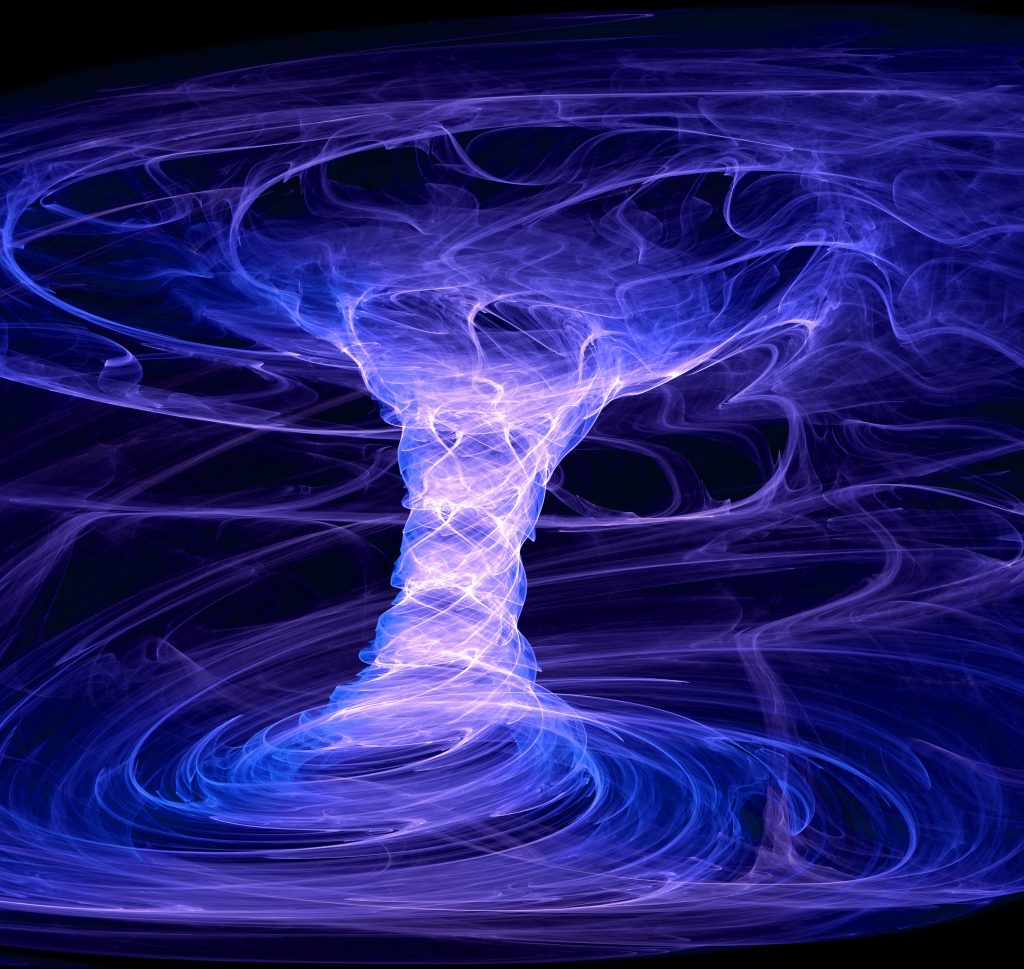
Understanding Topological Influences
So far, the influence of Hopfions hasn’t been widely considered by researchers studying the unique properties of ferroelectrics. Nonetheless, the three researchers argue that understanding their properties is crucial to gaining a full appreciation of how these materials behave. ‘An interplay between Hopfions and vortices gives rise to formation of a rich variety of other topological excitations,’ Professor Vinokur describes. ‘Of particular importance for the ferroelectric properties is the splitting of the interior of a ferroelectric particle into the regions hosting either Hopfions or vortices, that in the simplest cases evolve into what are called polarisation domains.’ These domains describe regions where polarisation lines are aligned in the same direction. When crossing the boundaries between domains, polarisation lines rapidly reverse to flow in the opposite direction. As a result, a knowledge of the dynamics of domain boundaries, is key to gaining a full understanding of ferroelectric properties.
A particularly remarkable effect arising from this interplay is called ‘negative capacitance’. As we have seen, as the plates of a regular capacitor are charged, an electric field arises in the space between them, and becomes stronger as the capacitor charge increases. In 1976, Rolf Landauer at the IBM Research Center guessed that capacitors exhibiting the opposite effect can also exist, if one places a ferroelectric material between two capacitor plates instead of the usual insulating material.
A few decades ago, this idea of the negative capacitance gained traction as it promised to resolve the deadlock of technological limits. Alas, however tempting, nobody knew how a device exhibiting negative capacitance could be made. Then, in 2019, the Terra Quantum team – Professors Vinokur, Razumnaya and Lukyanchuk – discovered that by harnessing the dynamics of topological excitations in the ferroelectric spacer, such a device could be realised.
Their study revealed that the ferroelectric capacitor spacer, if of the proper nanoscale size, splits into two ferroelectric domains hosting electric polarizations of opposite directions. If the spacer is the shape of a disc, the wall dividing the domains sets in its equilibrium position crossing the centre of the disc. Applying an electric charge to the capacitor’s plates causes the domain wall to move away from this position.
The resulting redistribution of the polarisation induces an opposite electric field to what is expected in a usual capacitor. The researchers found that as the capacitor’s charge increases, the electric field between them decreases, and vice versa, which is characteristic of negative capacitance.
This phenomenon would have been impossible in a single capacitor, since this would violate the energy conservation law. However, when the ferroelectric capacitor is a part of a properly designed electric circuit, this ‘anti-polarising effect’ comes into being. ‘At first glance, the existence of negative capacitance seems counterintuitive, and seems to contradict everything we learned in the basic course of physics,’ Professor Razumnaya indicates. ‘However, we discovered that topological properties in ferroelectrics precisely bring about this remarkable property.’
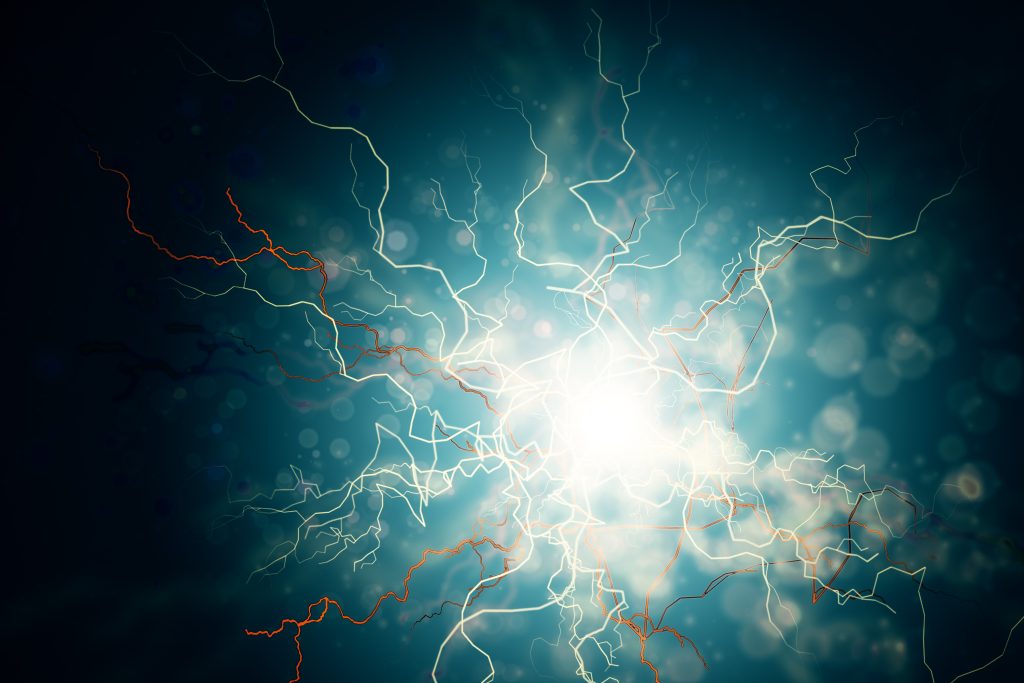
Reinventing the Capacitor
Professors Vinokur, Razumnaya and Lukyanchuk devised that setting domains in their ferroelectric capacitor into the heart of the standard field-effect transistor remarkably improves its performance. A transistor’s efficiency is characterised by the ratio between the operational electric signal of the transistor to the applied incoming signal. The related implication is that the transistor can function at much lower applied voltage, which immediately resolves a profound challenge faced by modern electronic technology – excessive heating, which forbids further miniaturisation of electronic devices.
When realised in a practical device, this effect will enable field-effect transistors to become smaller and more compact, without inducing higher power demands for microchip cooling systems. Based on these results, the researchers have established that this presents a promising route out of the predicament currently faced by field-effect transistor technology.
Inspiring Technological Breakthroughs
Professors Vinokur, Razumnaya and Lukyanchuk explain that there is still some way to go until their approach can be rolled out on large scales. ‘To make this negative capacitance practical, scientists need to tame the polarisation topological structures in technologically manufactured nanoscale ferroelectrics,’ says Professor Lukyanchuk. This will involve developing robust techniques for controlling and operating the motions of domain walls.
To gain this degree of practical control, the researchers propose the use of ferroelectric nanostructures, such as nanocylinders or nanodots – which could be made to contain single Hopfions or vortices within their polarisation lines. When achieved, this technique will lead to a new generation of transistors, potentially just a few atoms across – which will bring about unprecedented advances in information processing technologies.
Alongside its voltage-amplifying capabilities, the trio also discovered that the ferroelectric nanolayer allows their device to act as a resonator, where the vortices and Hopfions it contains vibrate with ultra-high frequencies – the same as those found between the microwave and infrared regions of the electromagnetic spectrum.
Since these ‘terahertz’ wavelengths are intrinsically safe, and non-destructive to biological tissues, there is currently a strong demand for devices that can reproduce them reliably. So far, however, they have proven notoriously difficult to generate. ‘This will enable access to the long-sought-after terahertz spectral band,’ Professor Vinokur describes. ‘It promises to open a new era in a rich lore of technologies – ranging from medical diagnostics to ultrafast Wi-Fi and satellite communications.’
Moving the Fulcrum
The researchers ultimately compare the potential capabilities of negative capacitance with the simple mechanics of the lever. As Archimedes first explained back in ancient Greece, if a lever operator places a fulcrum close to the object they are trying to lift, the force they apply to the other end will be greatly amplified – making their task significantly easier.
By harnessing the unique topological features of polarisation in ferroelectric materials, and their influence on capacitance, the profound difficulties associated with further miniaturising field-effect transistors may suddenly appear far more trivial. As Professors Vinokur, Lukyanchuk, and Razumnaya conclude, ‘This is how fundamental knowledge offers a lever long enough which, after the proper fulcrum is established, will move the world.’
SHARE
DOWNLOAD E-BOOK
LISTEN TO THE AUDIO
REFERENCE
https://doi.org/10.33548/SCIENTIA805
MEET THE RESEARCHERS
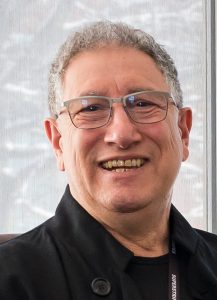
Professor Valerii Vinokur
Terra Quantum AG
Rorschach
Switzerland
Professor Vinokur earned his PhD in theoretical condensed matter physics from Russia’s Institute for Solid State Physics in 1979. Following an academic career at the Institute, and then at Argonne National Laboratory, he joined Terra Quantum AG as the US Chief Technology Officer. Professor Vinokur has received numerous awards for his research, including the 2003 and 2013 Alexander von Humboldt Research Awards, the 2017 International Abrikosov Prize, and the 2020 Fritz London Memorial Prize. He is now one of the most distinguished quantum scientists in the world, and has co-authored over 390 scientific papers.
CONTACT
E: vv@terraquantum.swiss
W: https://terraquantum.swiss/team/prof-dr-valerii-vinokur/
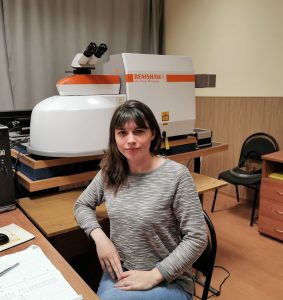
Professor Anna Razumnaya
Nanotechnology Department
Southern Federal University
Rostov-on-Don
Russia
Professor Razumnaya completed her PhD in condensed matter physics in 2018 at the University of Picardie Jules Verne. Since then, she has been working in material science focusing on ferroic materials – with research interests including Raman spectroscopy, analysis of nanostructured multifunctional materials, and dielectric and x-ray synchrotron measurements. Since 2016, Professor Razumnaya has been Head of the Nanotechnology Department at Southern Federal University. She applies her knowledge in practice, making considerable efforts to attract young talents to science.
CONTACT
E: ara@terraquantum.swiss
W: https://sfedu.ru/www/stat_pages22.show?p=RR/per_eng/D¶ms=(p_per_id=%3E6140
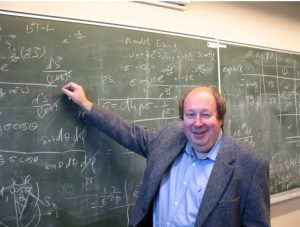
Professor Igor Lukyanchuk
Condensed Matter Physics Laboratory
University of Picardie Jules Verne
Amiens
France
Professor Lukyanchuk completed his PhD in theoretical physics at the Landau Institute for Theoretical Physics in Russia in 1990. Afterwards, he worked in the areas of superconductivity, magnetic materials, fullerenes, and ferroelectrics. Since 2001, is a full professor at the University of Picardie Jules Verne, where he teaches courses in statistical physics, mathematics, nanoscience, analytical mechanics, and methods of numerical simulations in physics. He also coordinates research networks across Europe, as part of the EU’s Horizon Europe project.
CONTACT
E: lukyanc@ferroix.net
KEY COLLABORATORS
Yuri A. Tikhonov, University of Picardie
Anaïs Sené, University of Picardie
FURTHER READING
I Luk’yanchuk, A Razumnaya, A Sené, Y Tikhonov, VM Vinokur, The ferroelectric field-effect transistor with negative capacitance, npj Computational Materials, 2022, 8, 52, https://doi.org/10.1038/s41524-022-00738-2.
MA Pavlenko, YA Tikhonov, AG Razumnaya, VM Vinokur, and IA Lukyanchuk, Temperature Dependence of Dielectric Properties of Ferroelectric Heterostructures with Domain-Provided Negative Capacitance, Nanomaterials, 2022, 12, 75.
I Luk’Yanchuk, Y Tikhonov, A Razumnaya, VM Vinokur, Hopfions emerge in ferroelectrics, Nature Communications, 2020, 11, 2433.
Y Tikhonov, S Kondovych, J Mangeri, M Pavlenko, L Baudry, A Sené, A Galda, S Nakhmanson, O Heinonen, A Razumnaya, I Luk’yanchuk, Controllable skyrmion chirality in ferroelectrics, Scientific Reports, 2020, 10, 8657.
I Luk’yanchuk, Y Tikhonov, A Sené, A Razumnaya, VM Vinokur, Harnessing ferroelectric domains for negative capacitance, Communications Physics, 2019, 2, 22.
I Luk’Yanchuk, A Sené, VM Vinokur, Electrodynamics of ferroelectric films with negative capacitance, Physical Review B, 2018, 98, 024107.
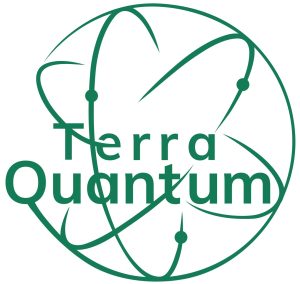
REPUBLISH OUR ARTICLES
We encourage all formats of sharing and republishing of our articles. Whether you want to host on your website, publication or blog, we welcome this. Find out more
Creative Commons Licence (CC BY 4.0)
This work is licensed under a Creative Commons Attribution 4.0 International License. 
What does this mean?
Share: You can copy and redistribute the material in any medium or format
Adapt: You can change, and build upon the material for any purpose, even commercially.
Credit: You must give appropriate credit, provide a link to the license, and indicate if changes were made.
SUBSCRIBE NOW
Follow Us
MORE ARTICLES YOU MAY LIKE
Probing Electron Dynamics in the Ultrafast Regime
In the atoms that make up the matter around us, negatively charged particles called electrons have properties such as spin and orbital angular momentum. Researchers at Martin Luther University Halle-Wittenberg have developed a theoretical framework which allows them to simulate the dynamics of the spin and orbital angular momentum of electrons in materials when probed with an ultrafast laser pulse. Using this framework, they are able to simulate different materials and improve our understanding of dynamics on an atomic scale.
Detecting Waves and Particles Around the World – and Beyond!
The magnetic field around our planet, along with unique radioactive decay processes, can cause the generation of Alfvén waves. Dr Gerald Smith of Positronics Research LLC has been researching how we can observe these waves and the unique atoms formed in these processes. By looking at data locally and how these particle events are represented at telescopes and monitoring systems around the globe, Dr Smith observes their impacts and points to their potential in future interplanetary exploration.
Dr Jens Holger Rindel | The Acoustics of Open-Air Theatres: Why Traditional Parameters Don’t Apply
When you sit in an ancient Greek theatre, marvelling at how clearly you can hear performers even in the back rows without microphones, you’re experiencing acoustic engineering that predates modern science by millennia. According to new research, many of the standard methods acousticians use for concert halls are ineffective for open-air venues. Dr Jens Holger Rindel of Odeon A/S in Denmark has demonstrated why we need different acoustical parameters to evaluate open-air theatres properly. His work challenges the conventional wisdom of applying indoor concert hall metrics to outdoor venues and proposes new approaches specifically tailored to spaces where the sky forms the ceiling.
Calculating Steering Friction: Essential Engineering for Military Aircraft Safety
The safe operation of military training aircraft depends on precise engineering calculations that most of us never consider. Dr Bogdan Adrian Nicolin and Dr Ilie Nicolin from the National Institute for Aerospace Research in Romania have developed sophisticated methods to calculate the steering friction moment in military aircraft. This critical engineering parameter ensures that pilots can safely control aircraft during taxiing, take-off, and landing – making their work essential for both pilot training and flight safety.

